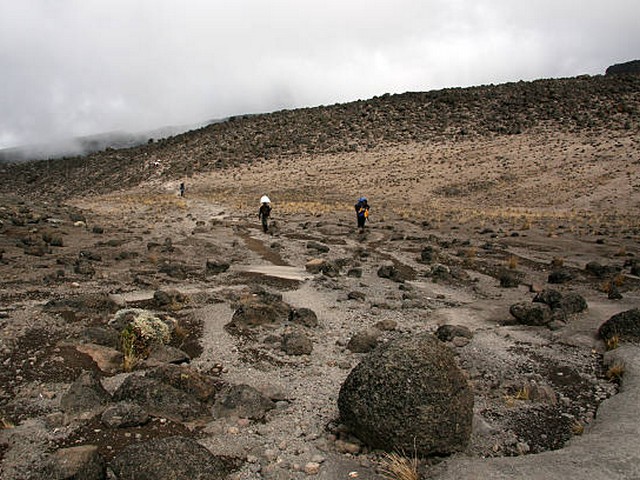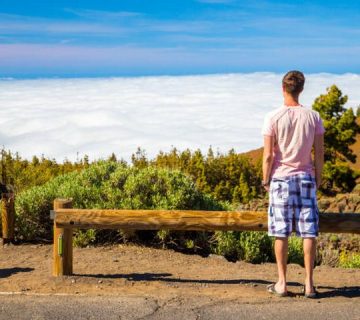Mastering Kilimanjaro: A Guide to Trekking Risk Management
Standing as a beacon of challenge and beauty, Mount Kilimanjaro captures the imaginations and adventurous spirits of thousands each year. Its majestic snow-capped summit, known as Uhuru Peak, rises gracefully above the African landscape, beckoning climbers to its heights. At the Kilimanjaro Centre for Trekking and Ecotourism (KCTE), we understand the allure of this iconic mountain. However, we also recognize the importance of preparing and managing the inherent risks associated with such an ambitious trek. In this detailed guide, we’ll explore essential risk management strategies that ensure a safe and fulfilling journey to the roof of Africa.
Why Focus on Kilimanjaro Trekking Risk Management?
Kilimanjaro isn’t just a trek; it’s an expedition that tests your physical endurance, mental resilience, and even your spirit. While the rewards are immense, so are the risks. Altitude sickness, unpredictable weather, and physical injuries are just a few challenges trekkers might face. Managing these risks effectively not only enhances safety but also increases your chances of successfully reaching the summit.
Preparing for the Climb: The First Step in Risk Management
Knowledge and Fitness
Embarking on a Kilimanjaro trek requires more than just willpower; it demands thorough preparation. The first step is acquiring adequate knowledge about the mountain’s environment. Understanding the symptoms and prevention of altitude sickness, the terrain specifics of each route, and the daily physical demands can make a significant difference.
Physical preparation cannot be overstated. A regimen that includes cardiovascular exercises, strength training, and hiking practice, preferably on varied terrains, will equip your body for the strenuous days on the mountain. At KCTE, we provide tailored fitness plans to help you meet these physical demands confidently.
Choosing the Right Gear
The correct gear is your best ally against the mountain’s harsh conditions. Essential items include:
- Properly insulated, waterproof boots
- Layered clothing to manage the cold
- A durable backpack
- A high-quality sleeping bag rated for low temperatures
- Sunscreen, sunglasses, and a wide-brimmed hat
KCTE offers gear rental services with top-of-the-line equipment designed for Kilimanjaro’s unique environment, ensuring you have access to the best without the burden of purchasing and transporting your gear.
On the Mountain: Active Risk Management Strategies
Acclimatization and Pacing
Once on the mountain, the way you manage your ascent plays a crucial role in mitigating health risks. Kilimanjaro’s routes are designed with varying lengths and complexities, each providing different opportunities for acclimatization. At KCTE, we emphasize choosing a route that best suits your experience and fitness level, often recommending the Lemosho or Machame routes for their longer durations, which aid in acclimatization.
Pacing is equally important. "Pole pole" (slowly, slowly in Swahili) is the mantra on Kilimanjaro. Maintaining a manageable pace helps your body adjust to the altitude gradually and can be pivotal in preventing altitude sickness.
Hydration and Nutrition
Hydration is critical at high altitudes, as dehydration can be a catalyst for altitude sickness. Drinking at least three to four liters of water daily can help mitigate this risk. Proper nutrition also plays a vital role in maintaining stamina and health. High-energy, easily digestible foods are best for maintaining your strength throughout the climb. KCTE ensures that all our trekking packages include ample, nutritious meals prepared by experienced mountain chefs.
Expert Guidance and Support
Perhaps the most significant risk management resource available to climbers is the expertise of experienced guides and porters. KCTE’s guides are trained in first aid and have extensive experience in high-altitude trekking, equipped to handle emergencies and make critical decisions about pace and progression. Our team-to-client ratio is designed to ensure that you have personalized support every step of the way.
Health and Safety: Continual Monitoring
Regular health checks are a routine part of our treks. Our guides perform daily health assessments to monitor signs of altitude sickness and other health concerns, ensuring early detection and immediate action. This proactive approach is vital in managing health risks on the mountain.
Conclusion: Ready for Your Kilimanjaro Adventure?
Kilimanjaro is more than just a climb; it’s a life-changing journey that tests your limits and rewards you with unparalleled views and personal triumphs. At Kilimanjaro Centre for Trekking and Ecotourism (KCTE), we are committed to providing a trekking experience that is safe, memorable, and deeply fulfilling. By focusing on comprehensive risk management, we ensure that every climber has the support and resources they need to safely navigate this incredible adventure.
Are you ready to take on the challenge of Kilimanjaro with the best in the business? Book your climb with KCTE today, and step into the adventure of a lifetime!
FAQs About Kilimanjaro Trekking Risk Management
Q1: What is the best time of year to climb Kilimanjaro?
A1: The best times to climb Kilimanjaro are during the dry seasons, from June to October and from December to March, when the weather is most favorable.
Q2: How do I choose the right route for my Kilimanjaro trek?
A2: Choosing the right route depends on your previous hiking experience, fitness level, and personal preferences. Routes like Lemosho and Machame offer beautiful scenery and more days for acclimatization, making them popular choices.
Q3: What are the signs of altitude sickness?
A3: Signs of altitude sickness include headache, nausea, dizziness, tiredness, loss of appetite, and shortness of breath. It’s crucial to be aware of these symptoms and communicate them to your guide immediately.
Q4: Can beginners climb Kilimanjaro?
A4: Yes, beginners can climb Kilimanjaro, provided they undertake adequate physical preparation and choose a suitable route. Additionally, having expert guides like those from KCTE can significantly enhance safety and success rates for novice climbers.




